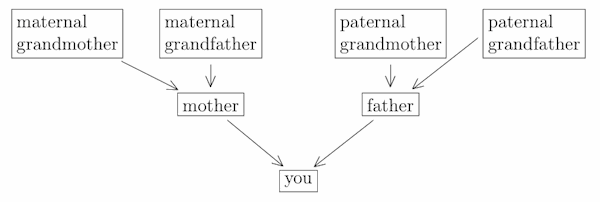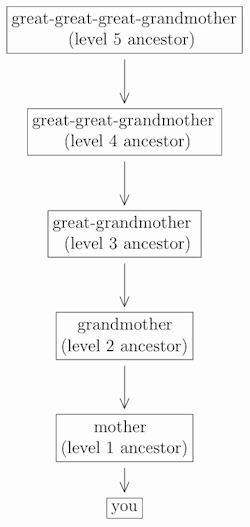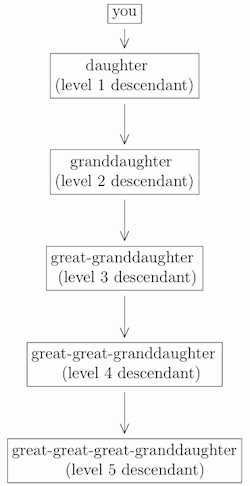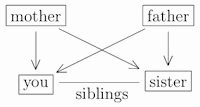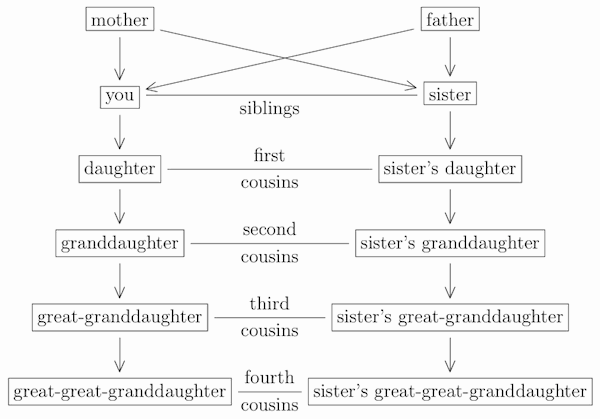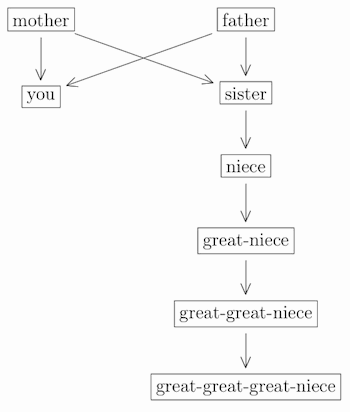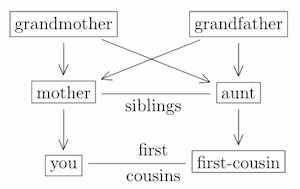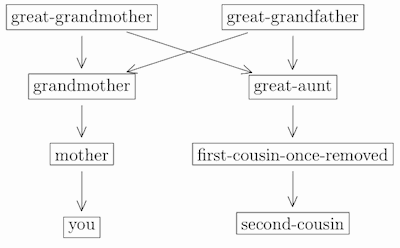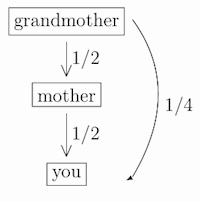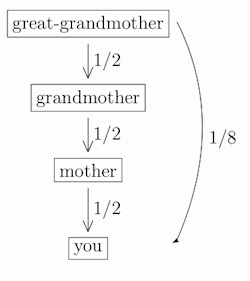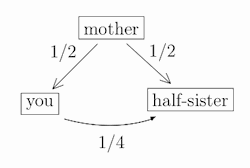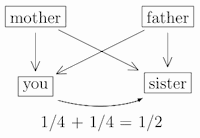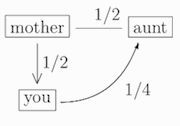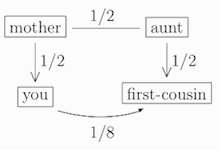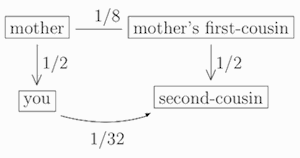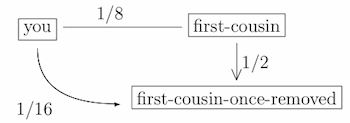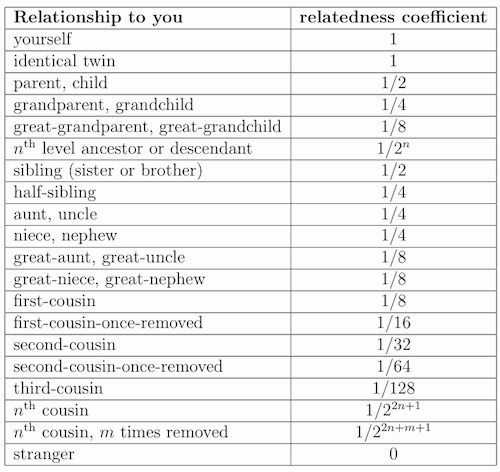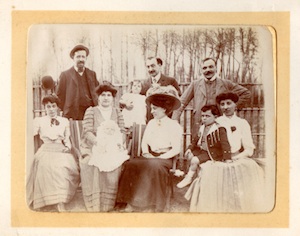By Matthew B. Crawford
The New Atlantis

Anyone in the market for a good used machine tool should talk to Noel Dempsey, a dealer in Richmond, Virginia. Noel’s bustling warehouse is full of metal lathes, milling machines, and table saws, and it turns out that most of it is from schools. EBay is awash in such equipment, also from schools. It appears shop class is becoming a thing of the past, as educators prepare students to become “knowledge workers.”
At the same time, an engineering culture has developed in recent years in which the object is to “hide the works,” rendering the artifacts we use unintelligible to direct inspection. Lift the hood on some cars now (especially German ones), and the engine appears a bit like the shimmering, featureless obelisk that so enthralled the cavemen in the opening scene of the movie 2001: A Space Odyssey. Essentially, there is another hood under the hood. This creeping concealedness takes various forms. The fasteners holding small appliances together now often require esoteric screwdrivers not commonly available, apparently to prevent the curious or the angry from interrogating the innards. By way of contrast, older readers will recall that until recent decades, Sears catalogues included blown-up parts diagrams and conceptual schematics for all appliances and many other mechanical goods. It was simply taken for granted that such information would be demanded by the consumer.
A decline in tool use would seem to betoken a shift in our mode of inhabiting the world: more passive and more dependent. And indeed, there are fewer occasions for the kind of spiritedness that is called forth when we take things in hand for ourselves, whether to fix them or to make them. What ordinary people once made, they buy; and what they once fixed for themselves, they replace entirely or hire an expert to repair, whose expert fix often involves installing a pre-made replacement part.
So perhaps the time is ripe for reconsideration of an ideal that has fallen out of favor: manual competence, and the stance it entails toward the built, material world. Neither as workers nor as consumers are we much called upon to exercise such competence, most of us anyway, and merely to recommend its cultivation is to risk the scorn of those who take themselves to be the most hard-headed: the hard-headed economist will point out the opportunity costs of making what can be bought, and the hard-headed educator will say that it is irresponsible to educate the young for the trades, which are somehow identified as the jobs of the past. But we might pause to consider just how hard-headed these presumptions are, and whether they don’t, on the contrary, issue from a peculiar sort of idealism, one that insistently steers young people toward the most ghostly kinds of work.
Judging from my admittedly cursory survey, articles began to appear in vocational education journals around 1985 with titles such as “The Soaring Technology Revolution” and “Preparing Kids for High-Tech and the Global Future.” Of course, there is nothing new about American future-ism. What is new is the wedding of future-ism to what might be called “virtualism”: a vision of the future in which we somehow take leave of material reality and glide about in a pure information economy. New and yet not so new—for fifty years now we’ve been assured that we are headed for a “post-industrial economy.” While manufacturing jobs have certainly left our shores to a disturbing degree, the manual trades have not. If you need a deck built, or your car fixed, the Chinese are of no help. Because they are in China. And in fact there are reported labor shortages in both construction and auto repair. Yet the trades and manufacturing are lumped together in the mind of the pundit class as “blue collar,” and their requiem is intoned. Even so, the Wall Street Journal recently wondered whether “skilled [manual] labor is becoming one of the few sure paths to a good living.” This possibility was brought to light for many by the bestseller The Millionaire Next Door, which revealed that the typical millionaire is the guy driving a pickup, with his own business in the trades. My real concern here is not with the economics of skilled manual work, but rather with its intrinsic satisfactions. I mention these economic rumors only to raise a suspicion against the widespread prejudice that such work is somehow not viable as a livelihood.
The Psychic Appeal of Manual Work I began working as an electrician’s helper at age fourteen, and started a small electrical contracting business after college, in Santa Barbara. In those years I never ceased to take pleasure in the moment, at the end of a job, when I would flip the switch. “And there was light.” It was an experience of agency and competence. The effects of my work were visible for all to see, so my competence was real for others as well; it had a social currency. The well-founded pride of the tradesman is far from the gratuitous “self-esteem” that educators would impart to students, as though by magic.
I was sometimes quieted at the sight of a gang of conduit entering a large panel in a commercial setting, bent into nestled, flowing curves, with varying offsets, that somehow all terminated in the same plane. This was a skill so far beyond my abilities that I felt I was in the presence of some genius, and the man who bent that conduit surely imagined this moment of recognition as he worked. As a residential electrician, most of my work got covered up inside walls. Yet even so, there is pride in meeting the aesthetic demands of a workmanlike installation. Maybe another electrician will see it someday. Even if not, one feels responsible to one’s better self. Or rather, to the thing itself—craftsmanship might be defined simply as the desire to do something well, for its own sake. If the primary satisfaction is intrinsic and private in this way, there is nonetheless a sort of self-disclosing that takes place. As Alexandre Kojève writes:
The man who works recognizes his own product in the World that has actually been transformed by his work: he recognizes himself in it, he sees in it his own human reality, in it he discovers and reveals to others the objective reality of his humanity, of the originally abstract and purely subjective idea he has of himself.
The satisfactions of manifesting oneself concretely in the world through manual competence have been known to make a man quiet and easy. They seem to relieve him of the felt need to offer chattering interpretations of himself to vindicate his worth. He can simply point: the building stands, the car now runs, the lights are on. Boasting is what a boy does, who has no real effect in the world. But craftsmanship must reckon with the infallible judgment of reality, where one’s failures or shortcomings cannot be interpreted away.
Hobbyists will tell you that making one’s own furniture is hard to justify economically. And yet they persist. Shared memories attach to the material souvenirs of our lives, and producing them is a kind of communion, with others and with the future. Finding myself at loose ends one summer in Berkeley, I built a mahogany coffee table on which I spared no expense of effort. At that time I had no immediate prospect of becoming a father, yet I imagined a child who would form indelible impressions of this table and know that it was his father’s work. I imagined the table fading into the background of a future life, the defects in its execution as well as inevitable stains and scars becoming a surface textured enough that memory and sentiment might cling to it, in unnoticed accretions. More fundamentally, the durable objects of use produced by men “give rise to the familiarity of the world, its customs and habits of intercourse between men and things as well as between men and men,” as Hannah Arendt says. “The reality and reliability of the human world rest primarily on the fact that we are surrounded by things more permanent than the activity by which they were produced, and potentially even more permanent than the lives of their authors.”
Because craftsmanship refers to objective standards that do not issue from the self and its desires, it poses a challenge to the ethic of consumerism, as the sociologist Richard Sennett has recently argued. The craftsman is proud of what he has made, and cherishes it, while the consumer discards things that are perfectly serviceable in his restless pursuit of the new. The craftsman is then more possessive, more tied to what is present, the dead incarnation of past labor; the consumer is more free, more imaginative, and so more valorous according to those who would sell us things. Being able to think materially about material goods, hence critically, gives one some independence from the manipulations of marketing, which typically divert attention from what a thing is to a back-story intimated through associations, the point of which is to exaggerate minor differences between brands. Knowing the production narrative, or at least being able to plausibly imagine it, renders the social narrative of the advertisement less potent. The tradesman has an impoverished fantasy life compared to the ideal consumer; he is more utilitarian and less given to soaring hopes. But he is also more autonomous.
This would seem to be significant for any political typology. Political theorists from Aristotle to Thomas Jefferson have questioned the republican virtue of the mechanic, finding him too narrow in his concerns to be moved by the public good. Yet this assessment was made before the full flowering of mass communication and mass conformity, which pose a different set of problems for the republican character: enervation of judgment and erosion of the independent spirit. Since the standards of craftsmanship issue from the logic of things rather than the art of persuasion, practiced submission to them perhaps gives the craftsman some psychic ground to stand on against fantastic hopes aroused by demagogues, whether commercial or political. The craftsman’s habitual deference is not toward the New, but toward the distinction between the Right Way and the Wrong Way. However narrow in its application, this is a rare appearance in contemporary life—a disinterested, articulable, and publicly affirmable idea of the good. Such a strong ontology is somewhat at odds with the cutting-edge institutions of the new capitalism, and with the educational regime that aims to supply those institutions with suitable workers—pliable generalists unfettered by any single set of skills.
Today, in our schools, the manual trades are given little honor. The egalitarian worry that has always attended tracking students into “college prep” and “vocational ed” is overlaid with another: the fear that acquiring a specific skill set means that one’s life is determined. In college, by contrast, many students don’t learn anything of particular application; college is the ticket to an open future. Craftsmanship entails learning to do one thing really well, while the ideal of the new economy is to be able to learn new things, celebrating potential rather than achievement. Somehow, every worker in the cutting-edge workplace is now supposed to act like an “intrapreneur,” that is, to be actively involved in the continuous redefinition of his own job. Shop class presents an image of stasis that runs directly counter to what Richard Sennett identifies as “a key element in the new economy’s idealized self: the capacity to surrender, to give up possession of an established reality.” This stance toward “established reality,” which can only be called psychedelic, is best not indulged around a table saw. It is dissatisfied with what Arendt calls the “reality and reliability” of the world. It is a strange sort of ideal, attractive only to a peculiar sort of self—gratuitous ontological insecurity is no fun for most people.
As Sennett argues, most people take pride in being good at something specific, which happens through the accumulation of experience. Yet the flitting disposition is pressed upon workers from above by the current generation of management revolutionaries, for whom the ethic of craftsmanship is actually something to be rooted out from the workforce. Craftsmanship means dwelling on a task for a long time and going deeply into it, because one wants to get it right. In management-speak, this is called being “ingrown.” The preferred role model is the management consultant, who swoops in and out, and whose very pride lies in his lack of particular expertise. Like the ideal consumer, the management consultant presents an image of soaring freedom, in light of which the manual trades appear cramped and paltry.
The Cognitive Demands of Manual Work In The Mind at Work, Mike Rose provides “cognitive biographies” of several trades, and depicts the learning process in a wood shop class. He writes that “our testaments to physical work are so often focused on the values such work exhibits rather than on the thought it requires. It is a subtle but pervasive omission.... It is as though in our cultural iconography we are given the muscled arm, sleeve rolled tight against biceps, but no thought bright behind the eye, no image that links hand and brain.”
Skilled manual labor entails a systematic encounter with the material world, precisely the kind of encounter that gives rise to natural science. From its earliest practice, craft knowledge has entailed knowledge of the “ways” of one’s materials—that is, knowledge of their nature, acquired through disciplined perception and a systematic approach to problems. And in fact, in areas of well-developed craft, technological developments typically preceded and gave rise to advances in scientific understanding, not vice versa. The steam engine is a good example. It was developed by mechanics who observed the relations between volume, pressure, and temperature. This at a time when theoretical scientists were tied to the caloric theory of heat, which later turned out to be a conceptual dead end. The success of the steam engine contributed to the development of what we now call classical thermodynamics. This history provides a nice illustration of a point made by Aristotle:
Lack of experience diminishes our power of taking a comprehensive view of the admitted facts. Hence those who dwell in intimate association with nature and its phenomena are more able to lay down principles such as to admit of a wide and coherent development; while those whom devotion to abstract discussions has rendered unobservant of facts are too ready to dogmatize on the basis of a few observations.
Another example is the Vernier scale used on machinists’ calipers and micrometers. Invented in 1631, it is a sort of mechanical calculus that renders continuous measurement in discrete digital approximation to four decimal places. Such inventions capture a reflective moment in which some skilled worker has made explicit the assumptions that are implicit in his manual skill.
In what has to be the best article ever published in an education journal, the cognitive scientists Mike Eisenberg and Ann Nishioka Eisenberg give real pedagogical force to this reflective moment, and draw out its theoretical implications (“Shop Class for the Next Millennium: Education Through Computer-Enriched Handicrafts,” in the Journal of Interactive Media in Education). They offer a computer program to facilitate making origami, or rather Archimedean solids, by unfolding these solids into two dimensions. But they then have their students actually make the solids, out of paper cut according to the computer’s instructions. “Computational tools for crafting are entities poised somewhere between the abstract, untouchable world of software objects and the homey constraints of human dexterity; they are therefore creative exercises in making conscious those aspects of craft work ... that are often more easily represented ‘in the hand’ than in language.” It is worth pausing to consider their efforts, as they have implications well beyond mathematics instruction.
In our early work with HyperGami, we often ran into situations in which the program provided us with a folding net that was mathematically correct—i.e., a technically correct unfolding of the desired solid—but otherwise disastrous. Figure 7 shows an example. Here, we are trying to create an approximation to a cone—a pyramid on a regular octagonal base. HyperGami provides us with a folding net that will, indeed, produce a pyramid; but typically, no paper crafter would come up with a net of this sort, since it is fiendishly hard to join together those eight tall triangles into a single vertex. In fact, this is an illustrative example of a more general idea—the difficulty of formalizing, in purely mathematical terms, what it means to produce a ‘realistic’ (and not merely technically correct) solution to an algorithmic problem derived from human practice.
I take their point to be that the crafting problem is in fact not reducible to an algorithmic problem. More precisely, any algorithmic solution to the crafting problem cannot itself be generated algorithmically, as it must include ad hoc constraints known only through practice, that is, through embodied manipulations. Those constraints cannot be arrived at deductively, starting from mathematical entities. It is worth noting in passing that this has implications for the theory of mind favored by artificial intelligence researchers, as it speaks to the “computability” of pragmatic cognition. It would be a task for cognitive science to determine if these considerations place a theoretical limit on the automation of work, but I can speak firsthand to how one area of work is resistant to algorithmic thinking.
Following graduate school in Chicago, I took a job in a Washington, D.C. think tank. I hated it, so I left and opened a motorcycle repair shop in Richmond. When I would come home from work, my wife would sniff at me and say “carbs” or “brakes,” corresponding to the various solvents used. Leaving a sensible trace, my day was at least imaginable to her. But while the filth and odors were apparent, the amount of head-scratching I’d done since breakfast was not. Mike Rose writes that in the practice of surgery, “dichotomies such as concrete versus abstract and technique versus reflection break down in practice. The surgeon’s judgment is simultaneously technical and deliberative, and that mix is the source of its power.” This could be said of any manual skill that is diagnostic, including motorcycle repair. You come up with an imagined train of causes for manifest symptoms and judge their likelihood before tearing anything down. This imagining relies on a stock mental library, not of natural kinds or structures, like that of the surgeon, but rather the functional kinds of an internal combustion engine, their various interpretations by different manufacturers, and their proclivities for failure. You also develop a library of sounds and smells and feels. For example, the backfire of a too-lean fuel mixture is subtly different from an ignition backfire. If the motorcycle is thirty years old, from an obscure maker that went out of business twenty years ago, its proclivities are known mostly through lore. It would probably be impossible to do such work in isolation, without access to a collective historical memory; you have to be embedded in a community of mechanic-antiquarians. These relationships are maintained by telephone, in a network of reciprocal favors that spans the country. My most reliable source, Fred Cousins in Chicago, had such an encyclopedic knowledge of obscure European motorcycles that all I could offer him in exchange was regular shipments of obscure European beer.
There is always a risk of introducing new complications when working on decrepit machines, and this enters the diagnostic logic. Measured in likelihood of screw-ups, the cost is not identical for all avenues of inquiry when deciding which hypothesis to pursue. For example, the fasteners holding the engine covers on 1970s-era Hondas are Phillips-head, and they are always stripped and corroded. Do you really want to check the condition of the starter clutch, if each of ten screws will need to be drilled out and extracted, risking damage to the engine case? Such impediments can cloud one’s thinking. Put more neutrally, the attractiveness of any hypothesis is determined in part by physical circumstances that have no logical connection to the diagnostic problem at hand, but a strong pragmatic bearing on it (kind of like origami). The factory service manuals tell you to be systematic in eliminating variables, but they never take such factors into account. So you have to develop your own decision tree for the particular circumstances. The problem is that at each node of this new tree, your own, unquantifiable risk aversion introduces ambiguity. There comes a point where you have to step back and get a larger gestalt. Have a cigarette and walk around the lift. Any mechanic will tell you that it is invaluable to have other mechanics around to test your reasoning against, especially if they have a different intellectual disposition.
My shop-mate Tommy Van Auken was an accomplished visual artist, and I was repeatedly struck by his ability to literally see things that escaped me. I had the conceit of a being an empiricist, but seeing things is not a simple matter. Even on the relatively primitive vintage bikes that were our specialty, some diagnostic situations contain so many variables, and symptoms can be so under-determining of causes, that explicit analytical reasoning comes up short. What is required then is the kind of judgment that arises only from experience; hunches rather than rules. There was more thinking going on in the bike shop than in the think tank.
Socially, being the proprietor of a bike shop in a small city gave me a feeling I never had before. I felt I had a place in society. Whereas “think tank” is an answer that, at best, buys you a few seconds when someone asks what you do, while you try to figure out what it is that you in fact do, with “motorcycle mechanic” I got immediate recognition. I bartered services with machinists and metal fabricators, which has a very different feel than transactions with money, and further increased my sense of social embeddedness. There were three restaurants with cooks whose bikes I had restored, where unless I deceive myself I was treated as a sage benefactor. I felt pride before my wife when we would go out to dinner and be given preferential treatment, or simply a hearty greeting. There were group rides, and bike night every Tuesday at a certain bar. Sometimes one or two people would be wearing my shop’s T-shirt. It felt good.
Given the intrinsic richness of manual work, cognitively, socially, and in its broader psychic appeal, the question becomes why it has suffered such a devaluation in recent years as a component of education. The economic rationale so often offered, namely that manual work is somehow going to disappear, is questionable if not preposterous, so it is in the murky realm of culture that we must look to understand these things. To this end, perhaps we need to consider the origins of shop class, so that we can better understand its demise.
Arts, Crafts, and the Assembly Line At a time when Teddy Roosevelt preached the strenuous life and elites worried about their state of “over-civilized” spiritual decay, the project of getting back in touch with “real life” took various forms. One was romantic fantasy about the pre-modern craftsman. This was understandable given changes in the world of work at the turn of the century, a time when the bureaucratization of economic life was rapidly increasing the number of paper shufflers. The tangible elements of craft were appealing as an antidote to vague feelings of unreality, diminished autonomy, and a fragmented sense of self that were especially acute among the professional classes.
The Arts and Crafts movement thus fit easily with the new therapeutic ethic of self-regeneration. Depleted from his workweek in the corporate world, the office worker repaired to his basement workshop to putter about and tinker, refreshing himself for the following week. As T. J. Jackson Lears writes in his history of the Progressive era, No Place of Grace, “toward the end of the nineteenth century, many beneficiaries of modern culture began to feel they were its secret victims.” Various forms of antimodernism gained wide currency in the middle and upper classes, including the ethic of craftsmanship. Some Arts and Crafts enthusiasts conceived their task to be evangelizing good taste as embodied in the works of craft, as against machine-age vulgarity. Cultivating an appreciation for objets d’art was thus a form of protest against modernity, with a view to providing a livelihood to dissident craftsmen. But it dovetailed with, and gave a higher urgency to, the nascent culture of luxury consumption. As Lears tells the story, the great irony is that antimodernist sentiments of aesthetic revolt against the machine paved the way for certain unattractive features of late-modern culture: therapeutic self-absorption and the hankering after “authenticity,” precisely those psychic hooks now relied upon by advertisers. Such spiritualized, symbolic modes of craft practice and craft consumption represented a kind of compensation for, and therefore an accommodation to, new modes of routinized, bureaucratic work.
But not everyone worked in an office. Indeed, there was class conflict brewing, with unassimilated immigrants accumulating in America’s Eastern cities and serious labor violence in Chicago and elsewhere. To the upper classes of those same cities, enamored of the craft ideal, the possibility presented itself that the laboring classes might remain satisfied with their material lot if they found joy in their labor. Shop class could serve to put the proper spin on manual work. Any work, it was posited, could be “artful” if done in the proper spirit; somehow a movement that had started with reverence for the craftsman now offered an apologetic for factory work. As Lears writes, “By shifting their attention from the conditions of labor to the laborer’s frame of mind, craft ideologues could acclaim the value of any work, however monotonous.”
The Smith-Hughes Act of 1917 gave federal funding for manual training in two forms: as part of general education and as a separate vocational program. The invention of modern shop class thus serviced both cultural reflexes of the Arts and Crafts movement at once. The children of the managerial class could take shop as enrichment to the college-prep curriculum, making a bird-feeder to hang outside mom’s kitchen window, while the children of laborers would be socialized into the work ethic appropriate to their station through what was now called “industrial arts” education. The need for such socialization was not simply a matter of assimilating immigrants from Southern and Eastern Europe who lacked a Protestant work ethic. It was recognized as a necessity for the broader working-class population, precisely because the institutions that had previously served this socializing function, apprenticeship and guild traditions, had been destroyed by new modes of labor. Writing in 1918, one Robert Hoxie worried thus:
It is evident ... that the native efficiency of the working class must suffer from the neglect of apprenticeship, if no other means of industrial education is forthcoming. Scientific managers, themselves, have complained bitterly of the poor and lawless material from which they must recruit their workers, compared with the efficient and self-respecting craftsmen who applied for employment twenty years ago.
Needless to say, “scientific managers” were concerned more with the “efficient” part of this formula than with the “self-respecting” part, yet the two are not independent. The quandary was how to make workers efficient and attentive, when their actual labor had been degraded by automation. The motivation previously supplied by the intrinsic satisfactions of manual work was to be replaced with ideology; industrial arts education now concerned itself with moral formation. Lears writes that “American craft publicists, by treating craftsmanship ... as an agent of socialization, abandoned [the] effort to revive pleasurable labor. Manual training meant specialized assembly line preparation for the lower classes and educational or recreational experiences for the bourgeoisie.”
Of the Smith-Hughes Act’s two rationales for shop class, vocational and general ed, only the latter emphasized the learning of aesthetic, mathematical, and physical principles through the manipulation of material things (Dewey’s “learning by doing”). It is not surprising, then, that the act came four years after Henry Ford’s innovation of the assembly line. The act’s dual educational scheme mirrored the assembly line’s severing of the cognitive aspects of manual work from its physical execution. Such a partition of thinking from doing has bequeathed us the dichotomy of “white collar” versus “blue collar,” corresponding to mental versus manual. These seem to be the categories that inform the educational landscape even now, and this entails two big errors. First, it assumes that all blue collar work is as mindless as assembly line work, and second, that white collar work is still recognizably mental in character. Yet there is evidence to suggest that the new frontier of capitalism lies in doing to office work what was previously done to factory work: draining it of its cognitive elements. Paradoxically, educators who would steer students toward cognitively rich work options might do this best by rehabilitating the manual trades, based on a firmer grasp of what such work is really like. And would this not be in keeping with their democratic mission? Let them publicly honor those who gain real craft knowledge, the sort we all depend on every day.
The Degradation of Blue-Collar Work The degradation of work in the last century is often tied to the evils of technology in one way or another. And it is certainly true that “technical progress has multiplied the number of simplified jobs,” as one French sociologist wrote in the 1950s. This writer pointed out a resemblance between the Soviet bloc and the Western bloc with regard to work; both rival civilizations were developing “that separation between planning and execution which seems to be in our day a common denominator linking all industrial societies together.” Yet while technology plays a role in facilitating this separation of planning and execution, the basic logic that drives the separation rests not on technological progress, but rather on a certain mode of economic relations, as Harry Braverman has shown in his masterpiece of economic reflection, Labor and Monopoly Capital: The Degradation of Work in the Twentieth Century. Braverman was an avowed Marxist, writing in 1974. With the Cold War now safely decided, we may consider anew, without defensive ire, the Marxian account of alienated labor. Braverman gives a richly descriptive account of the degradation of many different kinds of work. In doing so, he offers nothing less than an explanation of why we are getting more stupid with every passing year—which is to say, the degradation of work is ultimately a cognitive matter.
The central culprit in Braverman’s account is “scientific management,” which “enters the workplace not as the representative of science, but as the representative of management masquerading in the trappings of science.” The tenets of scientific management were given their first and frankest articulation by Frederick Winslow Taylor, an unembarrassed evangelist of efficiency whose Principles of Scientific Management was hugely influential in the early decades of the twentieth century. Stalin was a big fan, as were the founders of the first MBA program, at Harvard, where Taylor was invited to lecture annually. Taylor writes, “The managers assume ... the burden of gathering together all of the traditional knowledge which in the past has been possessed by the workmen and then of classifying, tabulating, and reducing this knowledge to rules, laws, and formulae.” Scattered craft knowledge is concentrated in the hands of the employer, then doled out again to workers in the form of minute instructions needed to perform some part of what is now a work process. This process replaces what was previously an integral activity, rooted in craft tradition and experience, animated by the worker’s own mental image of, and intention toward, the finished product. Thus, according to Taylor, “All possible brain work should be removed from the shop and centered in the planning or lay-out department.” It is a mistake to suppose that the primary purpose of this partition is to render the work process more efficient. It may or may not result in extracting more value from a given unit of labor time. The concern is rather with labor cost. Once the cognitive aspects of the job are located in a separate management class, or better yet in a process that, once designed, requires no ongoing judgment or deliberation, skilled workers can be replaced with unskilled workers at a lower rate of pay. Taylor writes that the “full possibilities” of his system “will not have been realized until almost all of the machines in the shop are run by men who are of smaller caliber and attainments, and who are therefore cheaper than those required under the old system.”
What becomes of the skilled workers? They go elsewhere, of course. But the competitive labor-cost advantage now held by the more modern firm, which has aggressively separated planning from execution, compels the whole industry to follow the same route, and entire skilled trades disappear. Thus craft knowledge dies out, or rather gets instantiated in a different form, as process engineering knowledge. The conception of the work is remote from the worker who does it.
Scientific management introduced the use of “time and motion analysis” to describe the physiological capabilities of the human body in machine terms. As Braverman writes, “the more labor is governed by classified motions which extend across the boundaries of trades and occupations, the more it dissolves its concrete forms into the general types of work motions. This mechanical exercise of human faculties according to motion types which are studied independently of the particular kind of work being done, brings to life the Marxist conception of ‘abstract labor.’” The clearest example of abstract labor is thus the assembly line. The activity (in the Aristotelian sense) of self-directed labor, conducted by the worker, is dissolved into abstract parts and then reconstituted as a process controlled by management.
At the turn of the last century, the manufacture of automobiles was done by craftsmen recruited from bicycle and carriage shops: all-around mechanics who knew what they were doing. In The Wheelwright’s Shop, George Sturt relates his experience in taking over his family business of making wheels for carriages, in 1884, shortly before the advent of the automobile. He had been a school teacher with literary ambitions, but now finds himself almost overwhelmed by the cognitive demands of his new trade. In Sturt’s shop, working exclusively with hand tools, the skills required to build a wheel regress all the way to the selection of trees to fell for timber, the proper time for felling them, how to season them, and so forth. To select but one minor task out of the countless he describes, here is Sturt’s account of fabricating a part of a wheel’s rim called a felloe:
Yet it is in vain to go into details at this point; for when the simple apparatus had all been gotten together for one simple-looking process, a never-ending series of variations was introduced by the material. What though two felloes might seem much alike when finished? It was the wheelwright himself who had to make them so. He it was who hewed out that resemblance from quite dissimilar blocks, for no two felloe-blocks were ever alike. Knots here, shakes there, rind-galls, waney edges (edges with more or less bark in them), thicknesses, thinnesses, were for ever affording new chances or forbidding previous solutions, whereby a fresh problem confronted the workman’s ingenuity every few minutes. He had no band-saw (as now [1923]) to drive, with ruthless unintelligence, through every resistance. The timber was far from being prey, a helpless victim, to a machine. Rather it would lend its own special virtues to the man who knew how to humour it.
Given their likely acquaintance with such a cognitively rich world of work, it is hardly surprising that when Henry Ford introduced the assembly line in 1913, workers simply walked out. One of Ford’s biographers wrote, “So great was labor’s distaste for the new machine system that toward the close of 1913 every time the company wanted to add 100 men to its factory personnel, it was necessary to hire 963.”
This would seem to be a crucial moment in the history of political economy. Evidently, the new system provoked natural revulsion. Yet, at some point, workers became habituated to it. How did this happen? One might be tempted to inquire in a typological mode: What sort of men were these first, the 100 out of 963 who stuck it out on the new assembly line? Perhaps it was the men who felt less revulsion because they had less pride in their own powers, and were therefore more tractable. Less republican, we might say. But if there was initially such a self-selection process, it quickly gave way to something less deliberate, more systemic.
In a temporary suspension of the Taylorist logic, Ford was forced to double the daily wage of his workers to keep the line staffed. As Braverman writes, this “opened up new possibilities for the intensification of labor within the plants, where workers were now anxious to keep their jobs.” These anxious workers were more productive. Indeed, Ford himself later recognized his wage increase as “one of the finest cost-cutting moves we ever made,” as he was able to double, and then triple, the rate at which cars were assembled by simply speeding up the conveyors. By doing so he destroyed his competitors, and thereby destroyed the possibility of an alternative way of working. (It also removed the wage pressure that comes from the existence of more enjoyable jobs.) At the Columbian World Expo held in Chicago in 1893, no fewer than seven large-scale carriage builders from Cincinnati alone presented their wares. Adopting Ford’s methods, the industry would soon be reduced to the Big Three. So workers eventually became habituated to the abstraction of the assembly line. Evidently, it inspires revulsion only if one is acquainted with more satisfying modes of work.
Here the concept of wages as compensation achieves its fullest meaning, and its central place in modern economy. Changing attitudes toward consumption seemed to play a role. A man whose needs are limited will find the least noxious livelihood and work in a subsistence mode, and indeed the experience of early (eighteenth-century) capitalism, when many producers worked at home on a piece-rate basis, was that only so much labor could be extracted from them. Contradicting the assumptions of “rational behavior” of classical economics, it was found that when employers would increase the piece rate in order to boost production, it actually had the opposite effect: workers would produce less, as now they could meet their fixed needs with less work. Eventually it was learned that the only way to get them to work harder was to play upon the imagination, stimulating new needs and wants. The habituation of workers to the assembly line was thus perhaps made easier by another innovation of the early twentieth century: consumer debt. As Jackson Lears has shown in a recent article, through the installment plan, previously unthinkable acquisitions became thinkable, and more than thinkable: it became normal to carry debt. The display of a new car bought on installment became a sign that one was trustworthy. In a wholesale transformation of the old Puritan moralism, expressed by Benjamin Franklin (admittedly no Puritan) with the motto “Be frugal and free,” the early twentieth century saw the moral legitimation of spending. Indeed, 1907 saw the publication of a book with the immodest title The New Basis of Civilization, by Simon Nelson Patten, in which the moral valence of debt and spending is reversed, and the multiplication of wants becomes not a sign of dangerous corruption but part of the civilizing process. That is, part of the disciplinary process. As Lears writes, “Indebtedness could discipline workers, keeping them at routinized jobs in factories and offices, graying but in harness, meeting payments regularly.”
The Degradation of White-Collar Work Much of the “jobs of the future” rhetoric surrounding the eagerness to end shop class and get every warm body into college, thence into a cubicle, implicitly assumes that we are heading to a “post-industrial” economy in which everyone will deal only in abstractions. Yet trafficking in abstractions is not the same as thinking. White collar professions, too, are subject to routinization and degradation, proceeding by the same process as befell manual fabrication a hundred years ago: the cognitive elements of the job are appropriated from professionals, instantiated in a system or process, and then handed back to a new class of workers—clerks—who replace the professionals. If genuine knowledge work is not growing but actually shrinking, because it is coming to be concentrated in an ever-smaller elite, this has implications for the vocational advice that students ought to receive.
“Expert systems,” a term coined by artificial intelligence researchers, were initially developed by the military for battle command, then used to replicate industrial expertise in such fields as oil-well drilling and telephone-line maintenance. Then they found their way into medical diagnosis, and eventually the cognitively murky, highly lucrative, regions of financial and legal advice. In The Electronic Sweatshop: How Computers are Transforming the Office of the Future into the Factory of the Past, Barbara Garson details how “Extraordinary human ingenuity has been used to eliminate the need for human ingenuity.” She finds that, like Taylor’s rationalization of the shop floor, the intention of expert systems is “to transfer knowledge, skill, and decision making from employee to employer.” While Taylor’s time and motion studies broke every concrete work motion into minute parts,
The modern knowledge engineer performs similar detailed studies, only he anatomizes decision making rather than bricklaying. So the time-and-motion study has become a time-and-thought study.... To build an expert system, a living expert is debriefed and then cloned by a knowledge engineer. That is to say, an expert is interviewed, typically for weeks or months. The knowledge engineer watches the expert work on sample problems and asks exactly what factors the expert considered in making his apparently intuitive decisions. Eventually hundreds or thousands of rules of thumb are fed into the computer. The result is a program that can ‘make decisions’ or ‘draw conclusions’ heuristically instead of merely calculating with equations. Like a real expert, a sophisticated expert system should be able to draw inferences from ‘iffy’ or incomplete data that seems to suggest or tends to rule out. In other words it uses (or replaces) judgment.
The human expert who is cloned achieves a vast dominion and immortality, in a sense. It is other experts, and future experts, who are displaced as expertise is centralized. “This means that more people in the advice or human service business will be employed as the disseminators, rather than the originators, of this advice,” Garson writes. In his 2006 book The Culture of the New Capitalism, Richard Sennett describes just such a process, “especially in the cutting-edge realms of high finance, advanced technology, and sophisticated services”: genuine knowledge work comes to be concentrated in an ever-smaller elite. It seems we must take a cold-eyed view of “knowledge work,” and reject the image of a rising sea of pure mentation that lifts all boats. More likely is a rising sea of clerkdom. To expect otherwise is to hope for a reversal in the basic logic of the modern economy—that is, cognitive stratification. It is not clear to me what this hope could be based on, though if history is any guide we have to wonder whether the excitation of such a hope has become an instrument by which young people are prepared for clerkdom, in the same perverse way that the craft ideology prepared workers for the assembly line. Both provide a lens that makes the work look appealing from afar, but only by presenting an image that is upside down.
The Craftsman as Stoic We are recalled to the basic antagonism of economic life: work is toilsome and necessarily serves someone else’s interests. That’s why you get paid. Thus chastened, we may ask the proper question: what is it that we really want for a young person when we give them vocational advice? The only creditable answer, it seems to me, is one that avoids utopianism while keeping an eye on the human good: work that engages the human capacities as fully as possible. What I have tried to show is that this humane and commonsensical answer goes against the central imperative of capitalism, which assiduously partitions thinking from doing. What is to be done? I offer no program, only an observation that might be of interest to anyone called upon to give guidance to the young.
Since manual work has been subject to routinization for over a century, the nonroutinized manual work that remains, outside the confines of the factory, would seem to be resistant to much further routinization. There still appear developments around the margins; for example, in the last twenty years pre-fabricated roof trusses have eliminated some of the more challenging elements from the jobs of framers who work for large tract developers, and pre-hung doors have done the same for finish carpenters generally. But still, the physical circumstances of the jobs performed by carpenters, plumbers, and auto mechanics vary too much for them to be executed by idiots; they require circumspection and adaptability. One feels like a man, not a cog in a machine. The trades are then a natural home for anyone who would live by his own powers, free not only of deadening abstraction, but also of the insidious hopes and rising insecurities that seem to be endemic in our current economic life. This is the stoic ideal.
So what advice should one give to a young person? By all means, go to college. In fact, approach college in the spirit of craftsmanship, going deep into liberal arts and sciences. In the summers, learn a manual trade. You’re likely to be less damaged, and quite possibly better paid, as an independent tradesman than as a cubicle-dwelling tender of information systems. To heed such advice would require a certain contrarian streak, as it entails rejecting a life course mapped out by others as obligatory and inevitable.
Matthew B. Crawford is currently a fellow at the Institute for Advanced Studies in Culture at the University of Virginia and a contributing editor of The New Atlantis. He would like to thank Joe Davis and David Franz, both of the Institute, for their contributions to this article. Mr. Crawford can be reached via matthewbcrawford.com.


